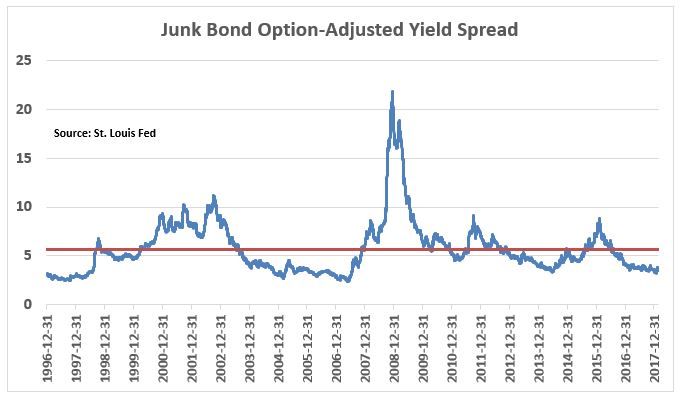Authored by John Rubino via DollarCollapse.com,
The Money Bubble is inflating at different speeds in different places. But apparently no culture is immune:
Household Debt Sees Quiet Boom Across the Globe
(Wall Street Journal) – A decade after the global financial crisis, household debts are considered by many to be a problem of the past after having come down in the U.S., U.K. and many parts of the euro area. But in some corners of the globe—including Switzerland, Australia, Norway and Canada—large and rising household debt is percolating as an economic problem. Each of those four nations has more household debt—including mortgages, credit cards and car loans—today than the U.S. did at the height of last decade’s housing bubble.
At the top of the heap is Switzerland, where household debt has climbed to 127.5% of gross domestic product, according to data from Oxford Economics and the Bank for International Settlements. The International Monetary Fund has identified a 65% household debt-to-GDP ratio as a warning sign.
In all, 10 economies have debts above that threshold and rising fast, with the others including New Zealand, South Korea, Sweden, Thailand, Hong Kong and Finland.
In Switzerland, Australia, New Zealand and Canada, the household debt-to-GDP ratio has risen between five and 10 percentage points over the past three years, paces comparable to the U.S. in the run-up to the housing bubble. In Norway and South Korea they’re rising even faster.
The IMF says a five percentage-point increase in household debt over a three-year period is associated with a hit to GDP growth of 1.25 percentage points three years down the road. The historical record suggests that large debts lead to a short-term economic boost but long-term struggles, as a greater share of the economy’s resources go to servicing the spending binge associated with high debts. The IMF also finds rising household debts are associated with greater risks of banking crashes and financial crisis.
“When household credit goes up too fast, the fact is, it doesn’t end well,” said Guillermo Tolosa, an economist at Oxford Economics.
The disparate economies on this debt list, though far apart geographically, actually have much in common. They are mostly wealthy with well-developed financial systems and avoided the worst of last decade’s global financial crisis. Their housing markets didn’t collapse dramatically. They weren’t the focus of fiscal debt crises. When nearly the entire world was in recession in 2009, Australia, New Zealand and South Korea managed to keep growing.
Compared with the euro area, the U.S., or Japan they looked like little outposts of stability.
But as economist Hyman Minsky once said, stability can be destabilizing. They attracted capital and their interest rates followed the rest of the world’s rates lower, sparking housing booms that are now a source of risk.
During the U.S. housing bubble, home prices nearly doubled from 2000 to their peak in 2006, according to the Case-Shiller home price index. In Canada, Australia, New Zealand and Sweden home prices have more than tripled by some measures.
Collectively, those 10 economies have $7.4 trillion in total economic output and a household debt stock about the same size. Taken as a whole, that’s more than the output of Germany or Japan. Moreover, many of them have a large stock of adjustable-rate mortgages that could suddenly become more costly to service should global interest rates rise.
Note that this article’s first sentence — “A decade after the global financial crisis, household debts are considered by many to be a problem of the past after having come down in the U.S., U.K. and many parts of the euro area.” — was outdated before it was written. As the chart below illustrates, US consumers are back to borrowing like it’s 2006. November was a credit card orgy and December was about twice the year ago level.
And has there ever been a case of a country’s house prices tripling in a decade without causing a crisis? That kind of data doesn’t seem to be available but it’s a safe bet that the answer is either “rarely” or “never.”
via Zero Hedge http://ift.tt/2HTMMQH Tyler Durden




 With bipartisan enthusiasm, the U.S. House of Representatives has just passed a
With bipartisan enthusiasm, the U.S. House of Representatives has just passed a 








 Two federal courts have now decided that Title VII of the Civil Rights Act protects people from workplace discrimination on the basis of sexual orientation, even though the law does not specifically use those words. A third federal court had previously ruled the opposite, and the current Department of Justice does not agree that federal antidiscrimination law covers sexual orientation. So there’s a good chance one of these cases will end up before the Supreme Court within the next couple of years.
Two federal courts have now decided that Title VII of the Civil Rights Act protects people from workplace discrimination on the basis of sexual orientation, even though the law does not specifically use those words. A third federal court had previously ruled the opposite, and the current Department of Justice does not agree that federal antidiscrimination law covers sexual orientation. So there’s a good chance one of these cases will end up before the Supreme Court within the next couple of years.